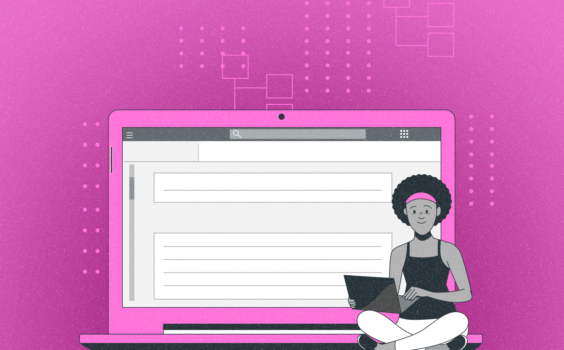What Is Staff Augmentation? How It Can Benefit Your Team in 2025

Hiring isn’t broken—it’s just outdated. If your business is feeling the drag of slow recruitment, high costs, and talent shortages, staff augmentation might be the upgrade your team needs. Traditional hiring can’t keep pace with shifting demands and tighter timelines.
Staff augmentation offers a smarter way to scale—by bringing in skilled professionals on demand, without the long-term baggage. You maintain control, your team stays focused, and your projects stay on track. It’s lean, agile, and designed for today’s high-speed business environment.
This guide breaks down how staff augmentation works, why it’s surging in 2025, and how you can use it to build faster, smarter, and stronger. From selecting the right model to avoiding common pitfalls, you’ll learn how to make augmentation a powerful part of your workforce strategy.
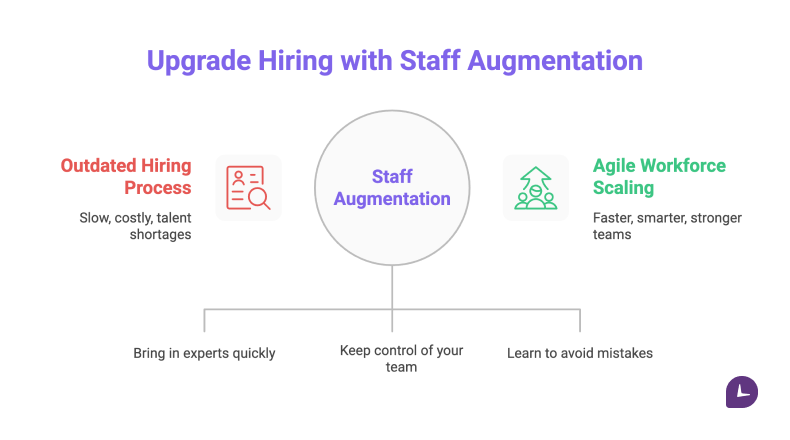
What Exactly Is Staff Augmentation?
Staff augmentation is a hiring model where external professionals temporarily join your in-house team.
Unlike outsourcing entire projects, this approach lets you fill skill gaps, boost capacity, or hit project deadlines—without losing control.
Augmented staff work under your direction, integrate into your team, and exit when the job is done.
Why Staff Augmentation, and Why Now?
The 2025 workforce is shaped by volatility: rapid tech shifts, project-based work, and global talent availability. Permanent hiring can’t keep up. Staff augmentation answers the call with flexibility, speed, and precision.
Instead of fixed payroll burdens, you get scalable solutions. Instead of months-long recruitment cycles, you gain instant expertise. Instead of training new hires from scratch, you onboard professionals who already know the ropes.
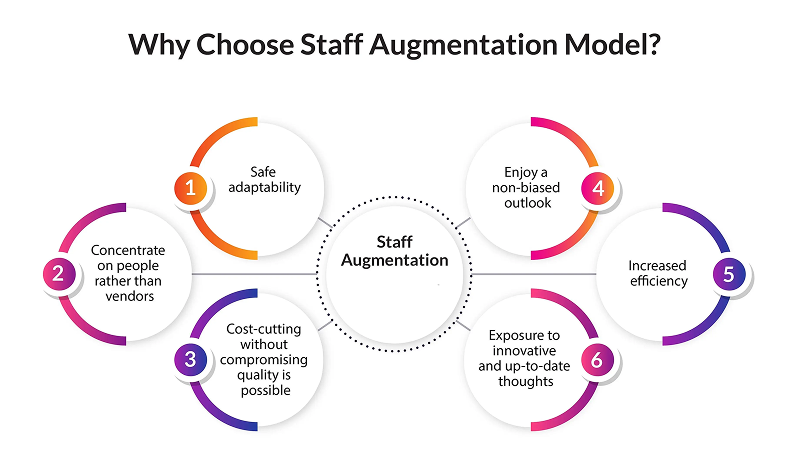
Choosing the Right Augmentation Strategy
Staff augmentation isn’t one-size-fits-all.
The model you choose depends on the depth of expertise needed, the duration of engagement, and where the professionals are based.
Here’s how companies are tailoring their approaches:
Commodity-Based Roles
When the task is high-volume but low-specialization—like data entry or basic admin work—commodity-based staff augmentation is the answer. It’s fast, efficient, and cost-effective. Think temp workers helping during tax season or retail assistants during the holidays.
Skill-Based Roles
Need someone who can hit the ground running but doesn’t need niche expertise? Skill-based augmentation brings in professionals like customer service reps or IT support specialists. They understand common platforms and processes and can integrate with minimal hand-holding.
Highly-Skilled Experts
For mission-critical work—think cloud architecture, AI, cybersecurity, or full-stack development—you need top-tier talent. These experts are brought in to lead, execute, and elevate. They don’t just fill a gap—they drive outcomes.
Time-Based Needs
Some companies augment for a few weeks (product launches, staff leave), while others engage talent for 6-12 months (long builds, digital overhauls). Short-term helps you pivot. Long-term helps you sustain.
Geographic Considerations
Companies can augment with:
🌍 Offshore professionals from regions like India or the Philippines to cut costs and maintain 24/7 productivity.
🌎 Nearshore talent from Argentina, Mexico, Colombia, Poland, Romania, Vietnam, or the Czech Republic offers better collaboration, stronger cultural alignment, and more manageable time zone overlap—making integration with core teams smoother and more efficient.
Your choice depends on what you value more: cost savings or seamless communication.
Project-Based Hybrid
Sometimes you need external specialists just until the job’s done—like a new CRM rollout or app launch. Staff are embedded for the project duration, then disengaged when it’s complete. High-impact, low-commitment.
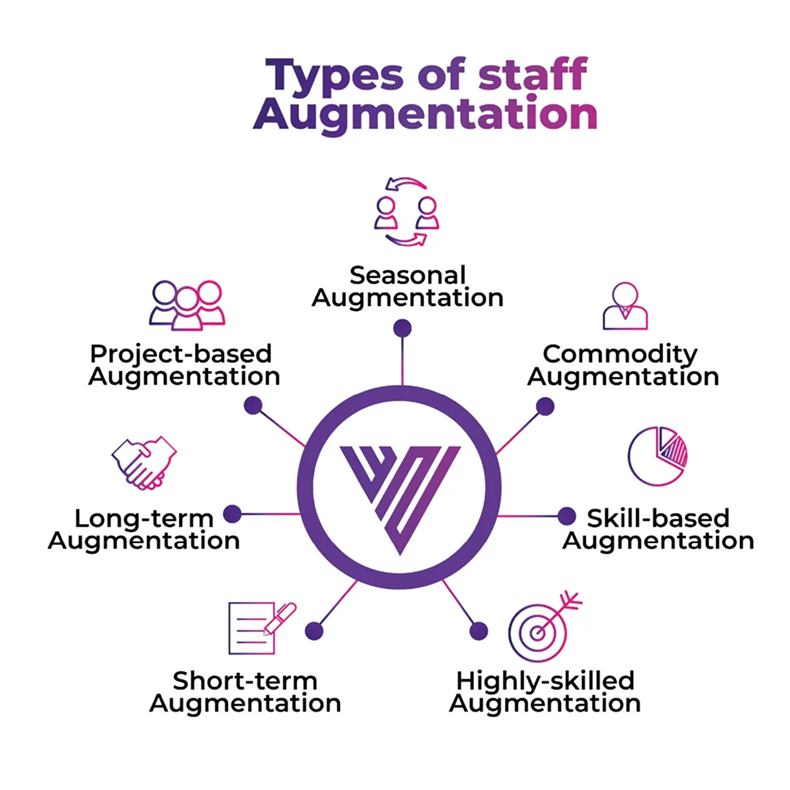
The Payoff: Real Benefits for Modern Teams
Staff augmentation isn’t just about plugging holes—it’s about driving performance. Here’s how it elevates operations:
Even agile strategies come with challenges. Here’s how to stay ahead:
- Communication Gaps? Use collaborative tools, define communication norms, and hold regular syncs.
- Integration Issues? Onboard external staff like internal hires. Include them in meetings, give them team buddies, and set shared goals.
- Security Risks? Lock down with NDAs, access controls, and scheduled security audits.
Maximize productivity of your business
Track employee productivity and simplify work with them
The 2025 Edge: What’s Shaping the Future of Staff Augmentation
Staff augmentation in 2025 is smarter, faster, and more precise than ever. AI now powers talent matching, aligning roles with the right professionals using machine learning and performance data. The result: faster ramp-ups and better long-term outcomes.
The rise of hybrid work has also transformed how teams operate. Offshore and nearshore professionals, once seen as auxiliary, now work side-by-side with core teams via daily standups, digital tools, and shared workflows.
Meanwhile, the focus is shifting from general availability to niche expertise. From AI engineers to cloud migration consultants, companies are prioritizing depth over breadth. That shift has triggered a move toward outcome-based pricing models, where billing is tied to project delivery—not hours logged.
Security is also top of mind. With remote access becoming standard, companies are doubling down on compliance, contractual protection, and IP safeguards.
Looking ahead, employers are valuing adaptability just as much as technical skills. The future of staff augmentation lies in continuous learning, cultural fit, and fluid collaboration.
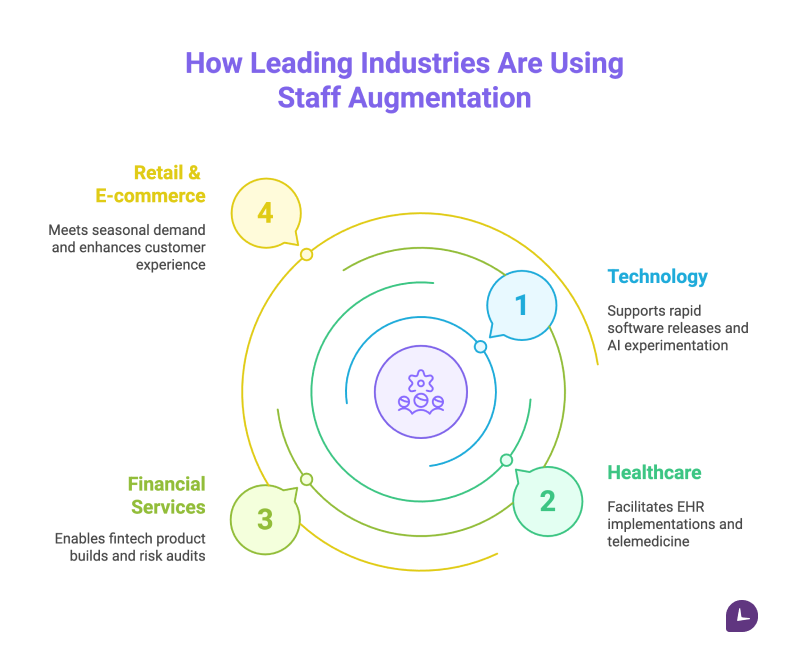
Conclusion: Is Staff Augmentation Right for You?
If you’re trying to build faster, do more with less, or tap into niche skills without long-term commitments—staff augmentation is worth exploring.
It’s about control, agility, and strategic talent use. When done right, it’s not a patch; it’s a power-up.
Don’t think of it as hiring help. Think of it as extending your team’s potential!
– The Monitask Team
Staff Augmentation: FAQ
What are the benefits of staff augmentation?
Staff augmentation accelerates hiring, minimizes HR overhead, and enables on-demand scaling. It gives you access to global talent and allows your internal teams to focus on strategic initiatives rather than stretch beyond their capacity. It’s especially valuable for adapting to changing market conditions without the burden of permanent hires.
How does staff augmentation affect internal teams?
When properly implemented, staff augmentation enhances internal teams by reducing workload, injecting fresh expertise, and speeding up execution. Success depends on communication and cultural integration—augmented professionals should be embedded into workflows, aligned with team goals, and treated as collaborative partners, not temporary outsiders.
Can staff augmentation be used for remote teams?
Yes—staff augmentation thrives in remote environments. Businesses can source top-tier talent globally and integrate them into virtual teams using modern collaboration tools. Success hinges on clear expectations, time zone coordination, and consistent communication to maintain productivity and cohesion.
Is staff augmentation cost-effective?
Absolutely. It’s often significantly more economical than full-time hiring for short- to mid-term needs. You avoid expenses tied to benefits, onboarding, and long-term salaries while gaining fast access to specialized skills—only when and where they’re needed.
What’s the first step to getting started with staff augmentation?
Begin by auditing your current capabilities: identify skills gaps, define your project scope, and clarify timelines. From there, partner with a trusted staff augmentation provider that understands your industry and can supply talent quickly. A smooth onboarding process ensures immediate contribution and long-term impact.



